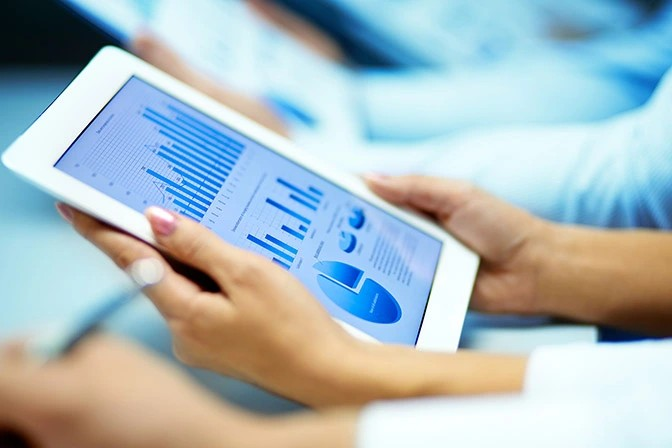The global economy has become more interconnected, and data-driven decision-making has emerged as a motivating force in international trade. Traditional trading strategies, which relied mainly on trends, intuition and static predictions, are now being replaced by real-time data, predictive analytics and machine learning algorithms. With the explosion of cross-border digital platforms E-commerceand complex supply chains, data has become crucial for countries and organizations as they use it to improve trade flows, mitigate risks, and gain competitive advantage.
Read also: The future of supply chains: data-driven field decisions
The blog discusses how data-driven strategies are not only overhauling the foundations of global trade, but also enabling smarter decision-making and faster reactions to market dynamics.
Unlock business intelligence with big data
Big Data is the core of modern trade strategy, and is an unstructured flow of data coming from various sources such as customs data, port operations, satellite imagery, shipping data, financial transactions, and social media. Advanced analytics platforms collect and process this data to come up with actionable business intelligence.
For example, governments could track container movements in near real-time in order to detect bottlenecks, track patterns of illicit trade, or see how changes in geopolitics affect trade routes. On the contrary, companies can use big data to monitor demand signals in foreign markets, monitor competitors’ prices, or predict commodity trends. This intelligence provides them with inputs to make decisions on issues from export timing and pricing to sourcing and inventory planning.
Enhancing supply chain visibility and flexibility
International trade relies on complex, multimodal supply chains that connect continents. A small delay at one port or a supply problem in one country can set off a chain reaction in a number of other parts. At this stage, data-driven decision making not only facilitates end-to-end supply chain visibility, but also facilitates the implementation of proactive risk mitigation strategies.
IoT sensors installed in shipments allow continuous, real-time tracking of the location, temperature and condition of shipments. If this data is associated Predictive analyticsThe logistics team will be in a position to anticipate any issues that may arise (such as port closures due to weather or waiting times at customs) as well as determine the best course of action if such inconveniences occur. Artificial intelligence (AI) technology can come up with an alternative sourcing plan in case the original suppliers withdraw their cooperation due to a collapse or if the political situation in the region becomes unstable.
By bringing in external trade data and linking it to their internal ERP system, TMS (Transportation Management Systems), and WMS (Warehouse Management Systems), organizations become more agile, thus able to weather these times of disruption, and flexible enough to adapt to changing global environments.
Business policy and regulatory improvement
Governments and international agencies have also realized that by using data-driven models, they can be more precise in their trade policies and compliance mechanisms. By applying advanced data mining, customs authorities can directly identify deceptive practices in commercial advertising, identify undervalue or misclassification, and increase revenue collection, while reducing the number of inspections.
During trade negotiations, different scenarios can be easily run with the help of data analytics, so policymakers can simulate the effects of different factors affecting tariff changes, sanctions, or trade deals on domestic industries. For example, machine learning models can be used to help determine whether a new free trade agreement might lead to an increase in export volumes, GDP growth, or employment in certain sectors. It thus allows not only evidence-based policy decisions to be made, but also the mitigation of political risks associated with trade reform.
Moreover, blockchain-based trade facilitation platforms that rely on data exchange make it possible to increase the level of transparency and at the same time reduce the level of friction in customs clearance, especially for SMEs that are still trying to open export markets for themselves.
Improving market entry and expansion strategies
For companies looking to enter foreign markets, data-driven decision making is a tool that helps reduce the level of uncertainty and thus increase the chance of success. Instead of relying solely on anecdotal insights or high-level market reports, companies can obtain datasets of consumer behavior, competitor activity, logistics costs, regulatory barriers, and local supplier capabilities to inform their decisions.
Natural Language Processing (NLP) tools can collect sentiment and new trends from social media and online reviews in target markets, and identify through geospatial data analysis which areas have the best customer density, infrastructure, purchasing power, etc. AI-powered commerce platforms such as Trademo, Panjiva or ImportGenius provide company-level insights into trade flows, enabling companies to identify ideal distributors, partners or buyers.
This move from mere intuition to detailed data analysis makes it easier for companies to plan more precise market entry strategies, reduce entry risks, and tailor their products effectively.
Ethical and strategic considerations in data use
On the one hand, a data-driven trading strategy brings a lot of good, but on the other hand, it faces some ethical and strategic challenges as well. Ensuring data privacy, cybersecurity, and compliance with local data regulations is crucial, especially when working across borders with different standards such as GDPR (Europe), PDPA (Singapore), or CCPA (California).
On the other hand, overestimating the role of algorithms without human supervision may lead to partial decisions or misinterpretations, especially in areas that are politically sensitive or that change rapidly. Companies need to find the right ratio between automation and human judgment, and at the same time, they must provide support in terms of data literacy and governance framework, which will ensure responsible use of business intelligence. Data-driven decision making has gone beyond being a futuristic idea, it is now a major factor contributing to effectiveness, flexibility and competitiveness in the international market. It doesn’t matter if it’s improving supply chains, understanding policy environments, or finding a place in new markets, it’s the ability to collect, understand, and implement data that sets the winners apart in global trade. As analytical tools become more accessible and intelligent, stakeholders across the trading ecosystem must embrace this shift, not just as a tactical update, but as a key component of a modern commerce strategy.
conclusion
Data-driven decision making has gone beyond being a futuristic idea, it is now a major factor contributing to effectiveness, flexibility and competitiveness in the international market. It doesn’t matter if it’s improving supply chains, understanding policy environments, or finding a place in new markets, it’s the ability to collect, understand, and implement data that sets the winners apart in global trade. As analytical tools become more accessible and intelligent, stakeholders across the trading ecosystem must embrace this shift, not just as a tactical update, but as a key component of a modern commerce strategy.










